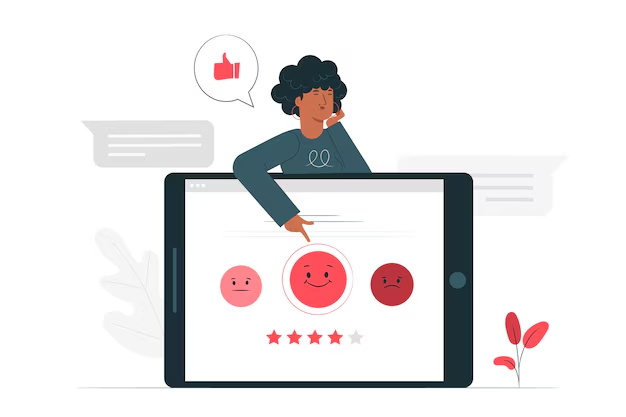Customer Satisfaction Research

“A customer talking about their experience with you is worth ten times more than that which you write or say about yourself.” – David J. Greer, Wind In Your Sails
This is because your customers tell you how your quality and value are perceived, and this is worth the success or failure of your business.
Customer Satisfaction is based on your perceived quality, perceived value, and customer’s expectations. It is a measurement that is used to determine how the product and service your company provides falls short, meets or exceeds your customer’s expectations.
A study conducted by HubSpot in 2017 among 752 companies in the UK, US, Ireland, Mexico, and Colombia found that those who focused on customer satisfaction had increased revenue and grew, unlike companies who did not prioritize customer satisfaction.
Customer Satisfaction leads to
- Customer Loyalty: the more satisfied customers are the more likely they are to repeat purchase from you
- Customer Retention: the more satisfied customers are the less likely they are to choose a different product or service provider
- Customer Acquisition: having satisfied customers helps your company stand out from other competitors
- Customer Recommendation: the more satisfied customers are the more likely they are to tell others about your product or service – word of mouth still remains the biggest driver of sales in Nigeria
So how do you ensure your customers are satisfied? According to Customer Service guru, Micah Solomon, there are four things that every company should do to ensure their customers are satisfied. They include:
- Consistently having the perfect product or service free from defects and glitches
- Ensuring your product or service is delivered by friendly people
- Ensuring your product or service is delivered in a timely manner
- Ensuring that there is a close loop issue resolution process in place to manage problems as they arise.
Companies such as Zappos (Footwear Retailer), Trader Joe’s (Grocery Store), Ritz Carlton (Hotels), CVS (Pharmacy), and Jet Blu (Airline), have some of the most satisfied customers in the world.
To know if your customers are satisfied, you need to constantly listen to the voice of your customers, take this feedback and implement changes in your company. To listen to the voice of your customers, you need to conduct Customer Satisfaction Research.
Customer Satisfaction Research is used to gauge the satisfaction levels of your customers and understand the reasoning behind their ratings. Gauging these levels can be accomplished using 3 metrics; CSAT Score, Net Promoter Score (NPS), and Customer Effort Score (CES).
CSAT Score is the most used and a key performance indicator for Customer Satisfaction. Your CSAT Score is calculated by speaking to your customers and asking them two questions:
On a scale of 0-10, how satisfied are you with the product and service received by {company}?
‘Why did you rate the product and service received by {company} ‘a’ {include rating}?
For question 1, after you get the rating for each of your customers, you add up the number of participants that gave a rating of 10 and divide it by the number of customer responses you received – this is your CSAT Score. Some companies use a scale of 1-5 and some use a rating of 10 and 9 to calculate satisfaction. The choice is up to the company, select a process and be consistent with it.
The next step is the most important, ensure the feedback you receive is actually implemented in your company.
Contact Versa Research your trusted data, research & consulting partner!
References
https://www.goodreads.com/quot…
https://neilpatel.com/blog/benefits-and-importance-of-customer-satisfaction/
https://www.helpscout.com/help…


